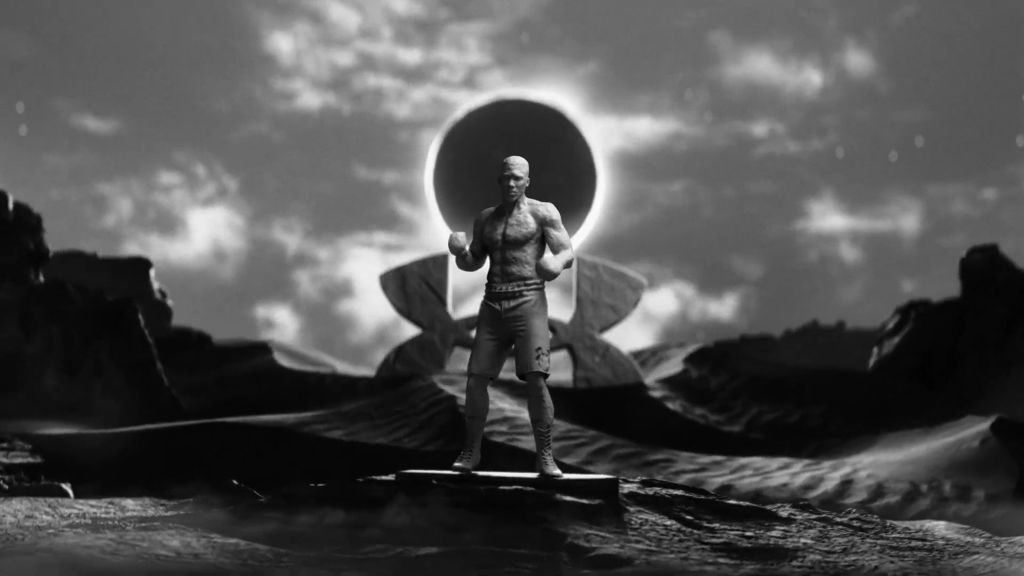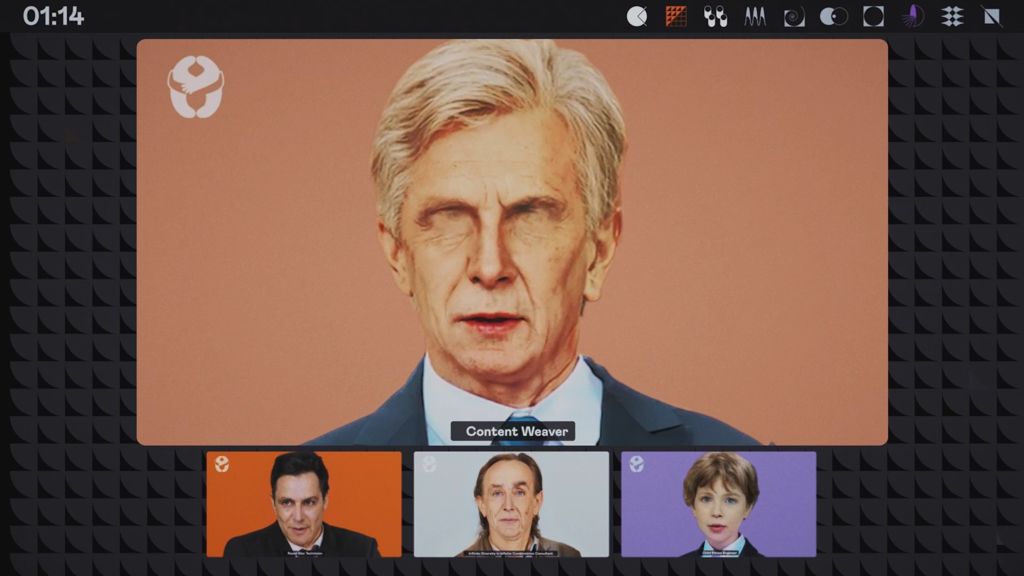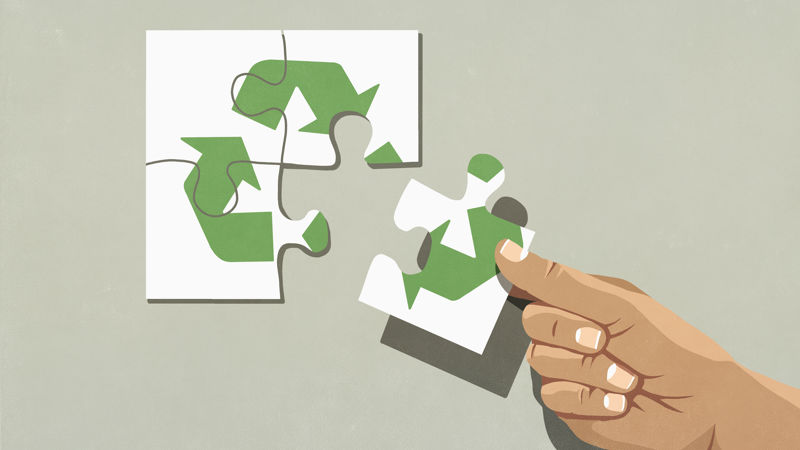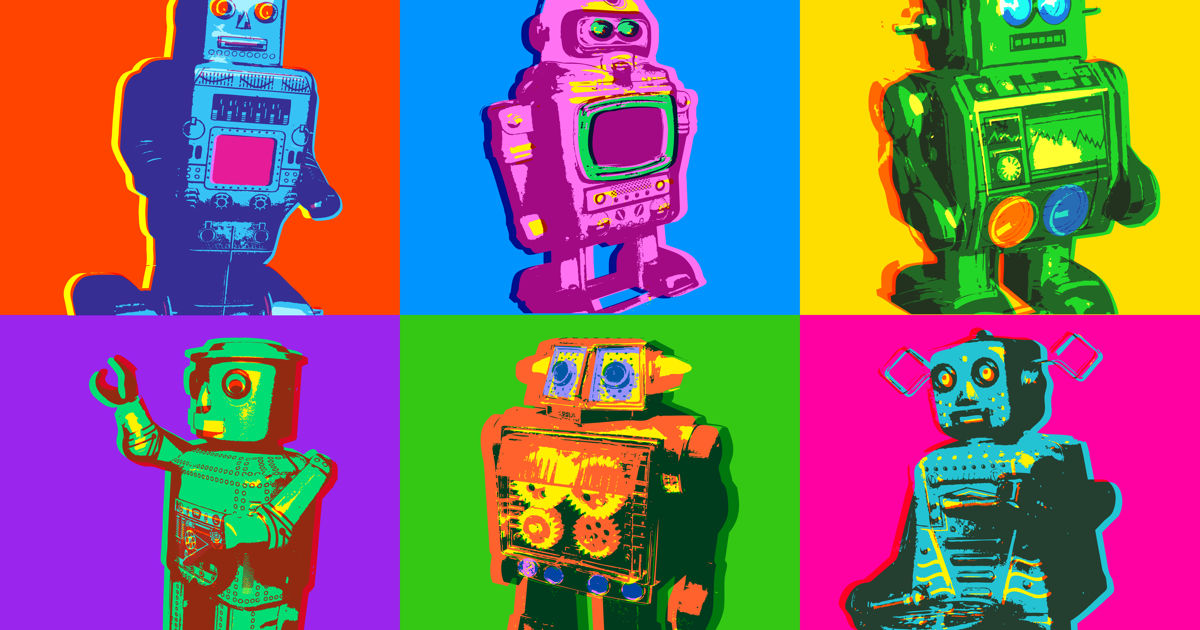Does AI mean all change?
Tim Cumming talks to a range of industry figures about how 'Artificial Intelligence' is impacting their work, their inspiration, their brands, their teams, and what it means for the future of advertising and human creativity itself.
Actor Sara Poyzer made recent headlines when she lost out on a voiceover job for a BBC documentary to an AI program.
A debate has sparked up about copyright, ownership and creativity after Under Armour’s new Forever Is Made Now spot, created by AI from existing assets, with a little help from 3D CGI, 2D VFX, Motion graphics, 35mm film, digital video, oh, and lots of human creatives’ previous work.
That the spot uses Shelly’s poem Ozymandias as its inspiration may set us wondering which will become the forgotten ruler of a kingdom lost to the desert sands – human creativity or the machine intelligence of AI?
Credits
powered by
- Agency Production Company In-House
- Production Company Tool
- Director Wesley Walker
-
-
Unlock full credits and more with a Source + shots membership.
Credits
powered by
- Agency Production Company In-House
- Production Company Tool
- Director Wesley Walker
- Executive Producer Dustin Callif
- Color The Mill/Los Angeles
- VFX/CGI Abyss Digital Studio
- VFX/CGI WeAreFX
- VFX Producer Oleksandr Dysenko
- Producer Jon Kolnoski
- Creative Director/Copywriter Adam Koppel
- Art Director/DP/Editor Rex Kane-Hart
- Editor Mykyta Bereg
- Colorist Yerlan Tanayev
- VFX Art Director/VFX Producer Shapxo
- VFX Producer Yan Marchenko
- Audio Mixer Daniel Berk
- Sound Designer/Audio Mixer Raphael Ajuelos
- Sound Editor Kai Scheer
- Music Supervisor/Music Orchestration/Sound Louise Woodward
- Talent Anthony Joshua

Credits
powered by
- Agency Production Company In-House
- Production Company Tool
- Director Wesley Walker
- Executive Producer Dustin Callif
- Color The Mill/Los Angeles
- VFX/CGI Abyss Digital Studio
- VFX/CGI WeAreFX
- VFX Producer Oleksandr Dysenko
- Producer Jon Kolnoski
- Creative Director/Copywriter Adam Koppel
- Art Director/DP/Editor Rex Kane-Hart
- Editor Mykyta Bereg
- Colorist Yerlan Tanayev
- VFX Art Director/VFX Producer Shapxo
- VFX Producer Yan Marchenko
- Audio Mixer Daniel Berk
- Sound Designer/Audio Mixer Raphael Ajuelos
- Sound Editor Kai Scheer
- Music Supervisor/Music Orchestration/Sound Louise Woodward
- Talent Anthony Joshua
Out in the wider world, Open AI’s recent decision not to release its voice-cloning tool should give us food for thought – a heaving banquet of it – as to what exactly AI can replicate and create, and how disruptive it may be. “We are choosing to preview but not widely release this technology at this time,” OpenAI announced, in order “to bolster societal resilience against the challenges brought by ever more convincing generative models”.
Dystopian headlines about AI aside, talking to a range of industry figures who already employ AI in their work and its outcomes, and you begin to see that the fear factor is the first obstacle to overcome to get a handle on the new intelligence at work in our own work lives.
It’s still an incredibly limited medium.
As Forever Is Made Now’s director, Wes Walker, says in the Instagram post that unveiled the AI spot: “Every current AI tool was explored and pushed to the maximum. It’s still an incredibly limited medium,” he adds, requiring hundreds of hours of collective teamwork to bring to completion, but with the one certainty that “Our tools are changing, our methods will adapt, AI will integrate into our workflows in ever-evolving way.”
But how, and how does it impact the issues of ownership, origination, copyright? “The Under Armour ad was presented to us as the ‘world’s first AI advert’,” says Trine Pillay, MD at the London arm of Scandi production company new-land. “However, the use of AI remains unclear. Given the original was fully written, developed and shot by humans, the rebranding of the spot as ‘AI’ feels deliberately ambiguous. We’ve got to define the integration of AI in the commercial landscape,” he adds, “from both a moral and legal perspective. Will certain films eventually obtain a copyright which prevents AI from using it at all? How would we even be able to discern what exactly is being used to train AI in the first place?”
Interaction between creativity and AI is a symbiotic one.
For the head of generative AI at M&C Saatchi, James Calvert, the fear that often frames conversations about AI perhaps tells us more about ourselves than the new technology. “Just as Chicken Little discovered when an apple fell from the sky, the dystopian vision of AI's takeover is likely to be more of a reflection of our anxieties and speculative fiction than an imminent reality,” he says.
“AI is undeniably transforming various aspects of our home and working lives, but we only need to look at the adaptability and resilience that have characterised human societies throughout history to see the idea that AI leads to a cataclysmic shift where humans are rendered obsolete as an exaggeration.”

Above: “Just as Chicken Little discovered when an apple fell from the sky, the dystopian vision of AI's takeover is likely to be more of a reflection of our anxieties and speculative fiction than an imminent reality” - James Calvert, M&C Saatchi.
When it comes to the ethics of its use – drawing on human work to make new hybrid work – he’s more shades of grey than black and white. And while he cleaves to the golden rule: “don't swipe someone else's creative lunch”, his focus is on the benefits. How it speeds up processes. And boosts creative ideas. “Many of us have found working with an AI has created a more consistent and improved quality of work,” he says. “AI’s role in the creative world is as a companion – unlocking the best of technology and human imaginations. Interaction between creativity and AI is a symbiotic one, where neither necessarily defines nor confines the other, but rather, they complement and enhance each other's capabilities. Not as rivals in a sci-fi showdown, but as a dynamic duo.”
A lot of the dystopic feelings people have are linked to a sense that the entire creative industry will be turned upside down overnight.
Matt Rebeiro, Executive Strategy Director at Iris London, which handles brands including adidas, Suzuki and Samsung, believes that “a lot of the dystopic feelings people have are linked to a sense that the entire creative industry will be turned upside down overnight. It won’t, because it’s not just the quality and craft of what you do that matters, but also the infrastructure, networks, processes and – yes– bureaucracy that go alongside it.” But change the industry it will. “It would be foolish not to think that the creative industry will look radically different. In the same way that technology has shaped and reshaped every industry to make it almost unrecognisable from what came before.”
For both Calvert and Rebeiro, rather than some great replacement theory, AI and human intelligence will work in symbiosis, relieving us of the burdens of repetitive tasks, and allowing creatives to reach further and make work we haven’t even conceptualised yet. As Rebeiro says: “The best answer to the question of how creativity and AI can interact is the old adage that ‘first we shape the tool; then the tool shapes us’.
"At the moment, LLM and GenAI tools are replicating the activities that creative folk already do. But we’ll likely develop brand new tools and tech for creatives to do things in unthought-of new media, modes and models. Take AR and VR – and what might AI do to supercharge our ability to create fully immersive environments and experiences that using today’s methods would be impossible or take decades?”

Above: Apple's Vision Pro device. Could AI supercharge the ability to create fully immersive environments and experiences?
Such confidence stands on one of the fundamentals of the new intelligence – that it’s a tool, not a takeover. For new-land’s Trine Pillay, “using AI as a creative tool to elevate and enhance the creative process is a vastly different matter to relying on AI itself to generate new ideas; by its very nature, these ideas only mimic human creations. At its strongest, AI is an automated tool, which can significantly improve our productivity. This gives more time to think creatively, and most importantly, with empathy – both inherently human qualities. And if we can be transparent about how we use AI then, both morally and legally, I think we can feel optimistic about an AI-integrated future.”
Rik Hopkinson, Design Director at CTI Digital, is on the same page, but with caveats. “A lot of companies are setting themselves up for failure with the idea that ‘anyone can use the tools’ and they’ll be able to cut a lot of costs. In some cases, good enough is good enough, but you still need a strong creative talent for great work.” And not just great work, but just as Rebeiro believes, all the work we haven’t even dreamt of yet.
First we shape the tool; then the tool shapes us.
“AI is about exploring new creative horizons, but it’s technical and challenging. Using it requires dedication, knowledge, focus, great communities and human conversations… And as some things can be done faster, we can create and discover new, previously impossible things.”
While the era of realising the impossible seems close, the thorny, ongoing real-world issue of property and copyright and who gets to own all the human creative work an AI gets trained on, is fundamental in terms of the hoped-for symbiotic development. “Diving into the deep end of AI ethics, especially when it involves remixing the old to create the brand new, is an emerging and yet-to-be-fully-assessed landscape,” says Saatchi’s James Calvert.
In short, is it permissible to train your LLM or GenAI on copyrighted work? For Calvert, the answer is dependent on scale. “If I were a musician, I could study the work of – say – Motown in the Seventies to learn about the use of chord sequences, rhythm and vocal delivery. Is it wrong for me to have listened to other Motown songs and used them to inform my own creativity? Most would say no. AI proponents would argue that that is all the AI is doing. But when we scale from one human listening to a sample of Motown hits to a robot listening to every Motown hit and instantly generating tens or hundreds of approximations, this feels – to many – intuitively different.”
Calvert isn’t alone, either, when he voices deep concerns over AI’s impacts outside the creative industries. “As half the world’s population goes to the polls this year, expect a tsunami of deep-fake content flooding timelines and seeking to skew elections.”
Over at east London production company Private Island, where the motto is ‘Life is weird and so are our ads’ Founder and Director Chris Boyle and EP Helen Power have delved into what AI can do creatively, including a forthcoming hybrid project where AI emerges, blinking, from its uncanny valley. “We worked with actors then trained models of those actors with their dialogue, so you have this transition from real into simulated footage, and it’s disconcerting when you do start to pull the humanity.”
Nobody wants something if everyone can have it.
Boyle has a lot to say about AI’s potential impacts, on entry-level creatives as the bottom end gets swallowed whole by AI automation, right through to the basic questions of what is intelligence, and what it means to be creative. “It’s called Artificial Intelligence,” he says, “but it’s trained only on human intelligence, and is it intelligent? Not really. It’s just following your marching orders. There’s no innate creativity in any of them. They’re programmes, being used as a means to an end by creatives. That sense of human collaboration, when you have a group of people all at the top of their field working together to create a singular project, is something that I suspect for a long time any pure AI solution would not be able to hold a candle to that.”
Private Island’s Executive producer Helen Power expands on that point. “If it’s anything too easy to produce, that doesn’t hold any value to a client. Nobody wants something if everyone can have it. Then there’s the reality of how people work, the amount of iteration and feedback, and everything that goes into the process.”
Credits
powered by
-
- Production Company Private Island
- Director Chris Boyle
-
-
Unlock full credits and more with a Source + shots membership.
Credits
powered by
- Production Company Private Island
- Director Chris Boyle

Credits
powered by
- Production Company Private Island
- Director Chris Boyle
Above: Private Island's hilarious, if dystopian, Infinite Diversity in Infinite Combinations.
Matt Rebeiro concurs. “I’m a strong believer that you can feel the human element in art created by real humans. It’s the old debate about analogue versus digital. It’s no different to asking whether you can feel the difference between a recording of a real orchestra, versus a digitally synthetic one. Or vinyl vs. and MP3. There’s a feeling that digital – and by extension AI – can’t replicate. Namely because that feeling is embodied, and AI isn’t.”
If you create your larger language model from Twitter and Reddit, it’ll talk like Twitter and Reddit...
Still, Private Island has located the funny in it all, after dallying with AI outcomes in the hilarious, if still dystopian Infinite Diversity in Infinite Combinations. Here, they conjured what already feels like yesterday’s AI iteration, in all its excruciating obviousness, armoured in platitudes as well as the biases hardwired into many AI platforms. “That was written, animated and voiced entirely with machine learning,” observes Chris. “We gave it enough rope to hang itself, basically. If you create your larger language model from Twitter and Reddit, it’ll talk like Twitter and Reddit...”
Laughing in the face of a techno-human step change, for this year’s April Fools, comedy duo Nick & Charles released KEEPLE.AI, which brings some famous faces (John Lennon, James Gandolfini, the Queen) back from the grave to push some product and be 21st-century relatable. “We wanted to poke fun at how AI companies promise easy solutions for humanity while missing what makes us human in the first place,” they say. “Utilising a dead celebrity’s likeness to sell IP in perpetuity definitely meets that criteria. There’s a novelty and allure to AI’s easy ability to resurrect beloved artists, actors and characters, but at the cost of the emotional experience of the audience and at the expense of that very artist’s legacy.”
Credits
powered by
-
-
- Director Nick & Charles
-
-
Unlock full credits and more with a Source + shots membership.
Credits
powered by
- Director Nick & Charles

Credits
powered by
- Director Nick & Charles
Above: KEEPLE.AI, directors Nick & Charles' AI April fools stunt.
We’ll probably meet a lot of AI-revived legends strutting the boards in the years to come, literal spectres of machine intelligence merging with human creativity. But will it overwhelm it? We hope for imaginative leaps, fear a deepfake future, and trust that the machines we’ve trained with all our culture will know their place in the pecking order. For now they’re copyists, not originators, tools rather than creative directors. Let’s hope we don’t wake up to find they’re vampires, draining our life forces.
We wanted to poke fun at how AI companies promise easy solutions for humanity while missing what makes us human in the first place.
“We tried to go ten steps ahead to portray the grotesque, futuristic applications taken to their silliest extreme to try and set some guardrails for the present,” say Nick & Charles of KEEPLE.AI.
Let’s see if those guardrails are in place when April Fools comes around again in 2025.
)


















